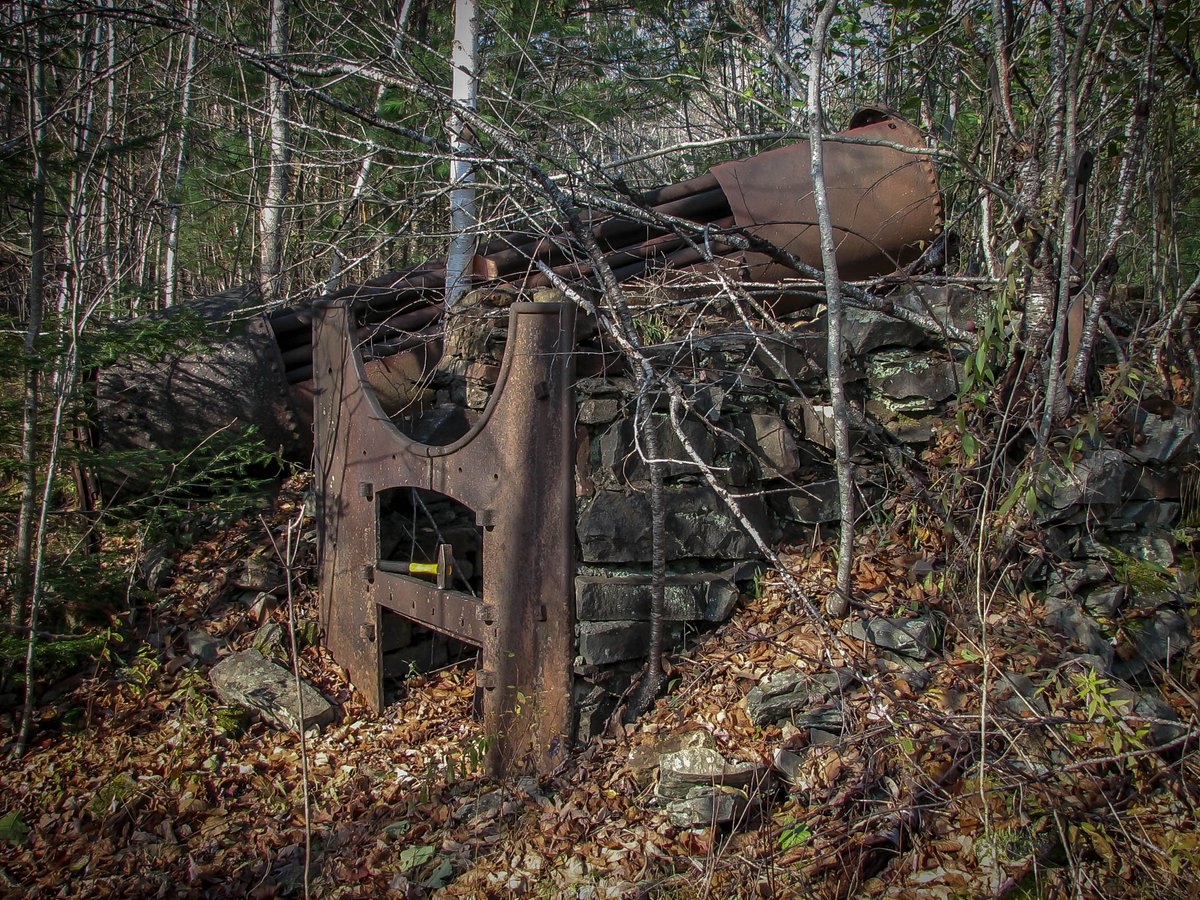A rising tide lifts all boats. That’s as true today as it was in the late 1880s when 20 years of #gold #mining in the Whiteburn played a key role in building Northern #QueensCounty.
See this thread for the story.
#nspoli #cbpoli #novascotia @BernJordanMP @QueensShelPC

See this thread for the story.
#nspoli #cbpoli #novascotia @BernJordanMP @QueensShelPC


Gold was discovered in Whiteburn, six miles southwest of #Caledonia, in 1885. A forest fire reportedly ravaged the area and uncovered the gold. Jim McGuire, supposedly hiding out from the tax collector, found it in the barrens near his home and triggered the Whiteburn #gold rush. 

It’s said that he registered the find in his brother’s name and hid his earnings - $5000 in the first year - in the floorboards of his cousin’s house to throw the authorities off his trail.
By 1887 three mines and mills were operating and mining continued until 1905.
#nspoli
By 1887 three mines and mills were operating and mining continued until 1905.
#nspoli

The economic activity from mining didn’t just benefit miners. It created what we now call spinoff jobs and economic growth in the area. The miners bought food from local farmers.
#nspoli #cbpoli #novascotia
#nspoli #cbpoli #novascotia

Jobs were created in forestry because timber was needed for homes, stores, a school, hotels, the mines and other buildings. Wood was also burned for heat and cooking in homes and to power mining equipment. Labourers and carpenters were needed to do the building.
#nspoli #cbpoli
#nspoli #cbpoli

Besides selling food to miners and the growing population – #Whiteburn grew to 1000 people - a railway built in 1903 to service the mines became important infrastructure that allowed crops and lumber to be sent by rail instead of cart paths.
#nspoli #cbpoli #novascotia
#nspoli #cbpoli #novascotia

Fresh vegetables, fruits and meat could now be in #Bridgewater in just a few hours. The railway also increased access to machinery, chemicals and other modern agricultural supplies.
#nspoli #cbpoli #novascotia
#nspoli #cbpoli #novascotia

According to a 1977 federal government report, because of the gold mines “men, machinery, and capital flowed into the area. This tide did not diminish for 20 years and even when it did it left pools of experience and wealth.”
#nspoli #cbpoli #novascotia
#nspoli #cbpoli #novascotia

Modern mines and quarries also have this sort of broad, positive economic impact. Some Nova Scotia mines and quarries have been operating and employing #NovaScotians for well over half a century and are economic pillars of their communities.
#nspoli #cbpoli #novascotia
#nspoli #cbpoli #novascotia

But sites that have shorter lifespans are still important to their host communities and the province in general. They create jobs in rural areas (i.e. the #MooseRiver #gold mine employs about 300 #NovaScotians, paying an average wage of $85,000 per year.)
#nspoli #cbpoli
#nspoli #cbpoli

They also create spinoff jobs at many companies that provide expertise, equipment and supplies to Nova Scotia’s mining industry. Everyone involved in a mine needs to eat, buy gas, get their vehicles serviced, buy things for their families, etc.
#nspoli #cbpoli #novascotia
#nspoli #cbpoli #novascotia

Mines also generate government revenues that help pay for programs like health and education.
(Check out this great video about how the community around Moose River is benefitting from the gold mine: )
#nspoli #cbpoli #novascotia
(Check out this great video about how the community around Moose River is benefitting from the gold mine: )
#nspoli #cbpoli #novascotia
A rising tide lifts all boats at modern mines, just like it did in Whiteburn.
The pictures below show an old boiler, safe and claim marker in #Whiteburn.
#nspoli #cbpoli #novascotia


The pictures below show an old boiler, safe and claim marker in #Whiteburn.
#nspoli #cbpoli #novascotia



• • •
Missing some Tweet in this thread? You can try to
force a refresh




























